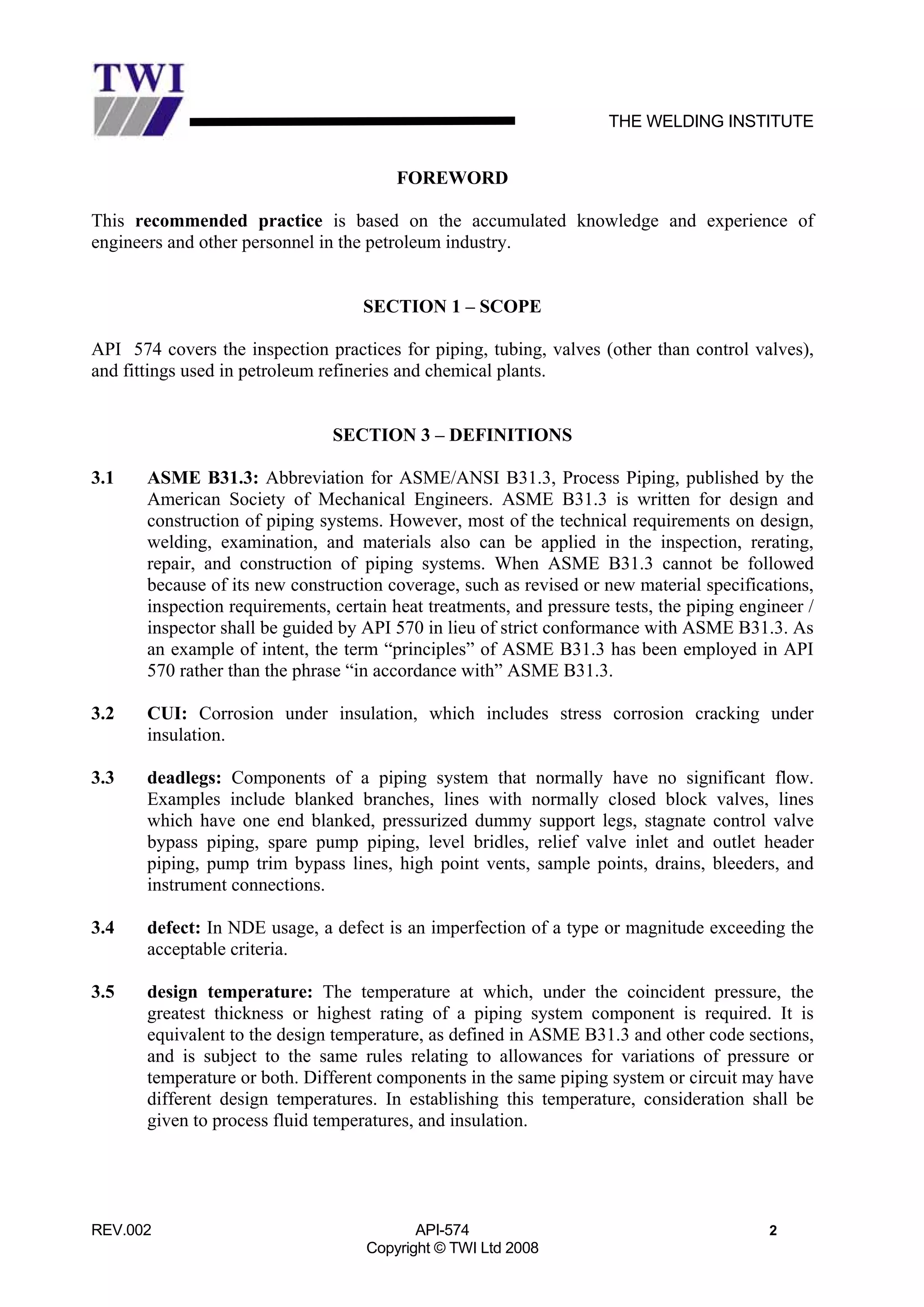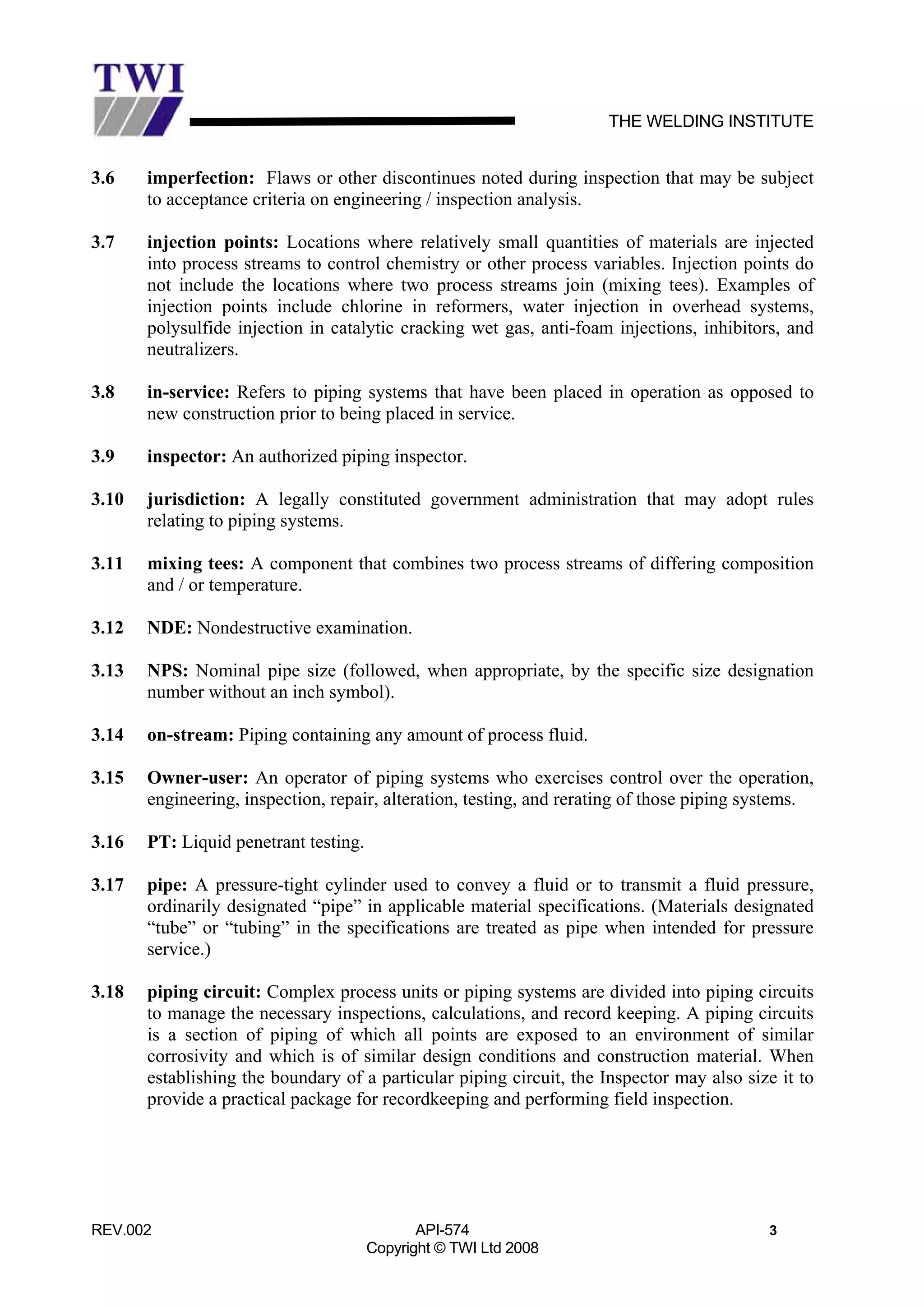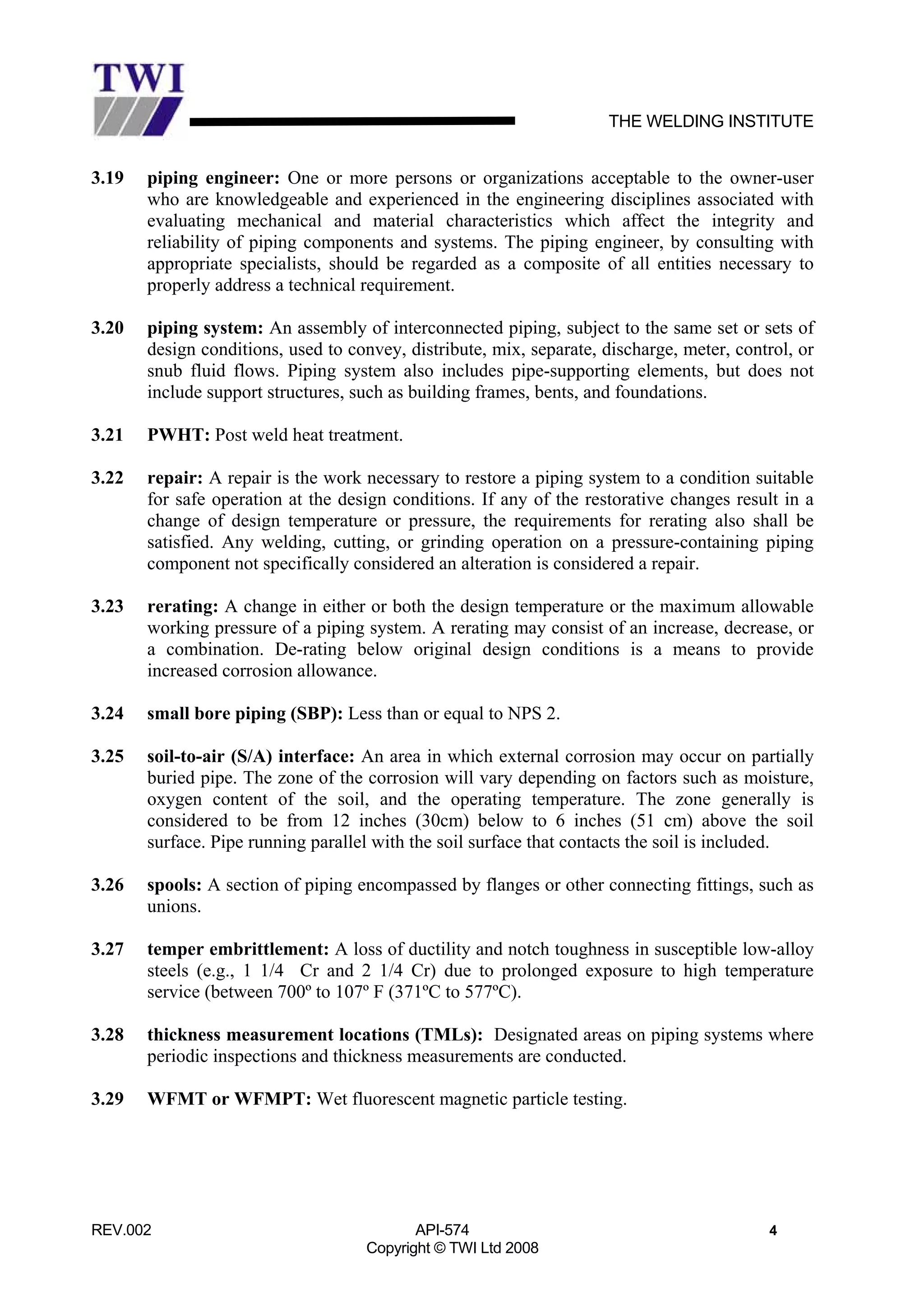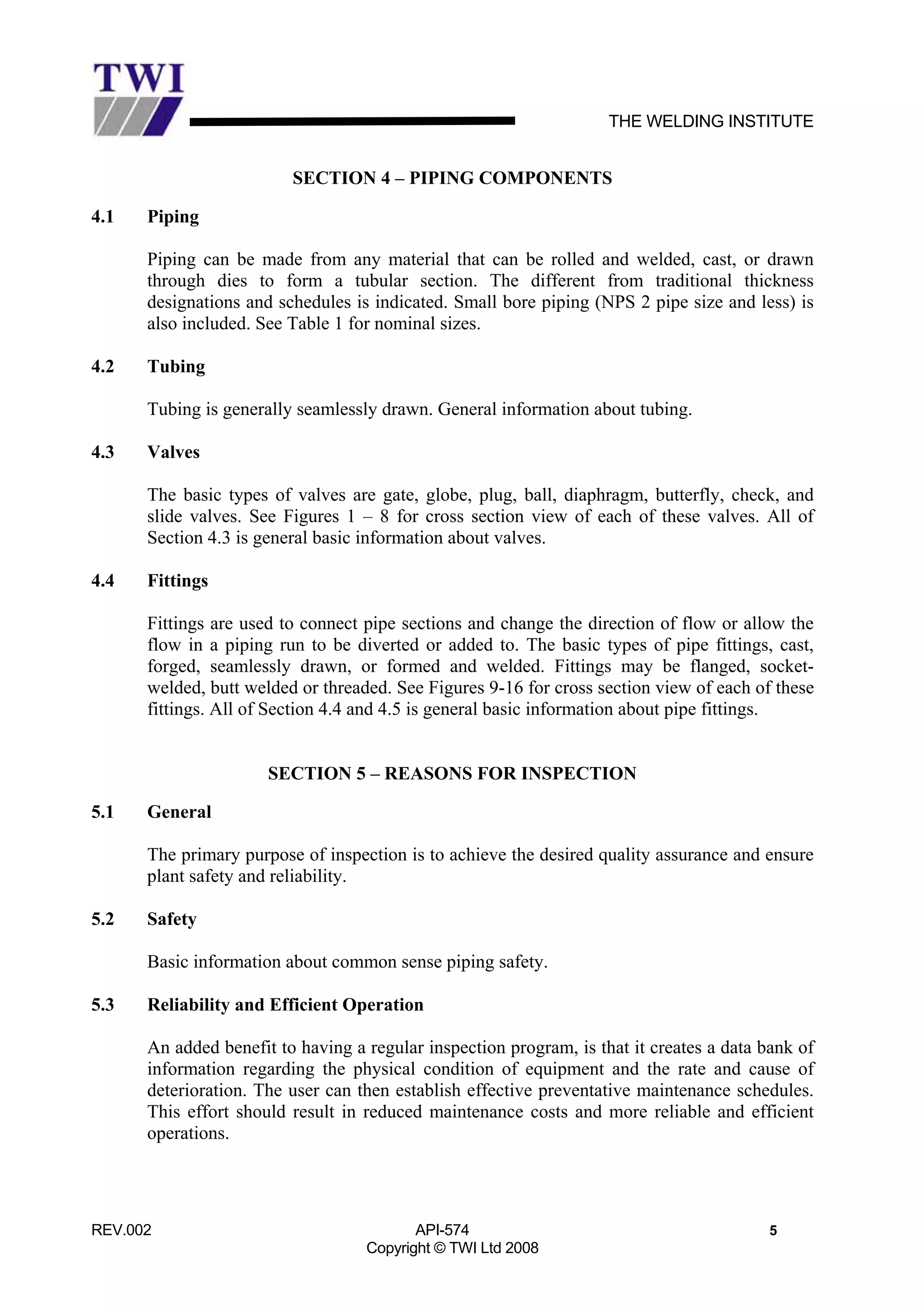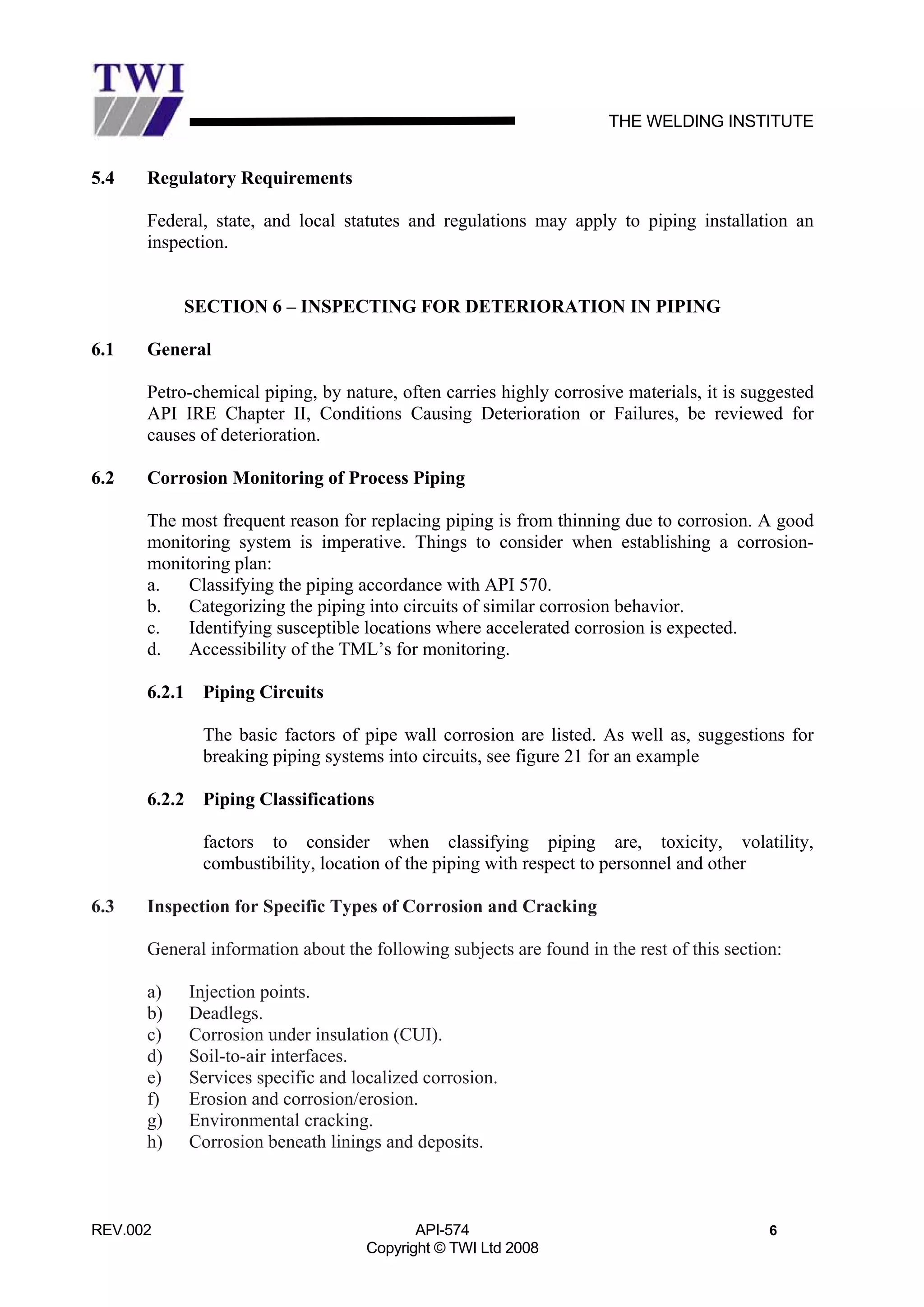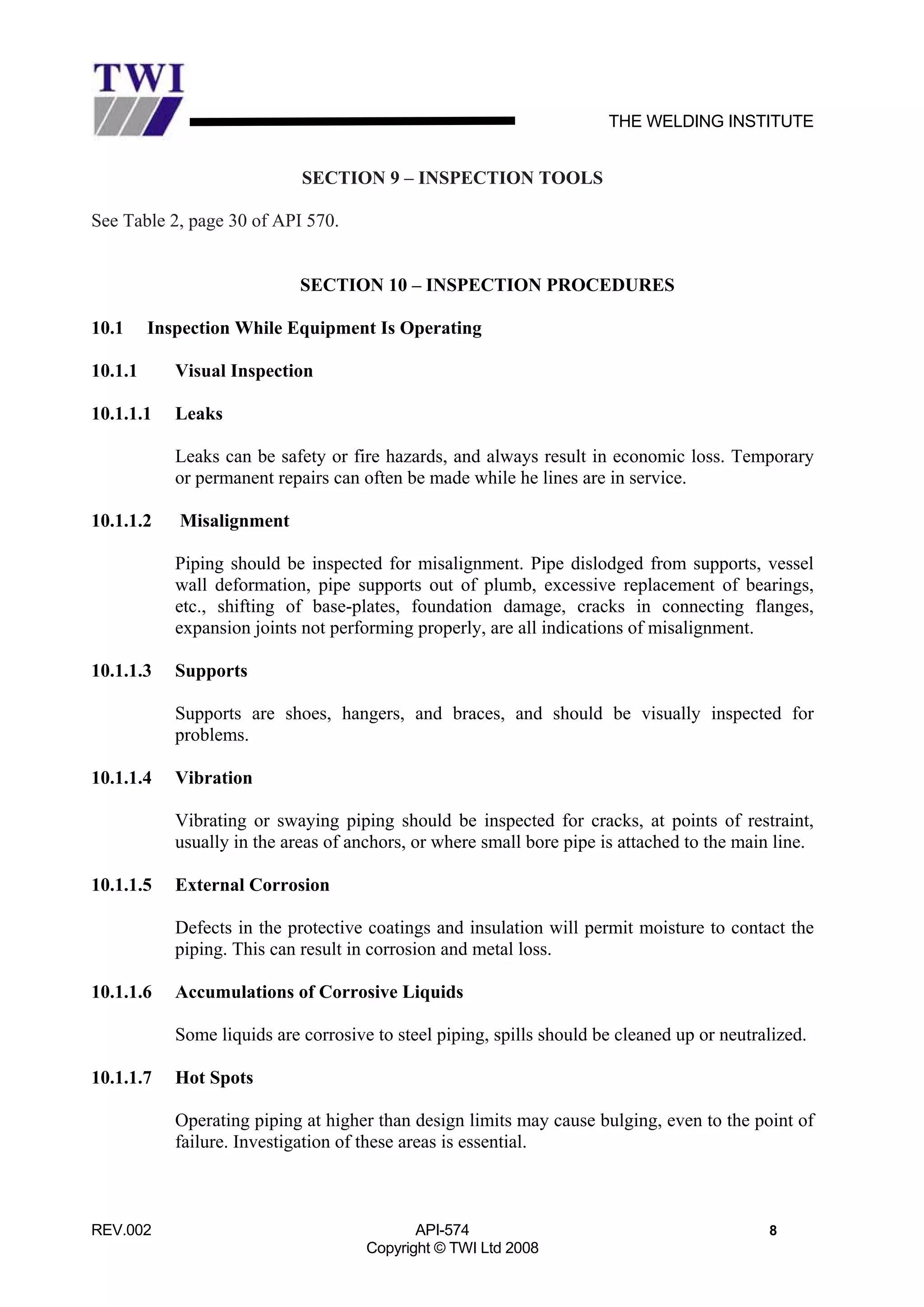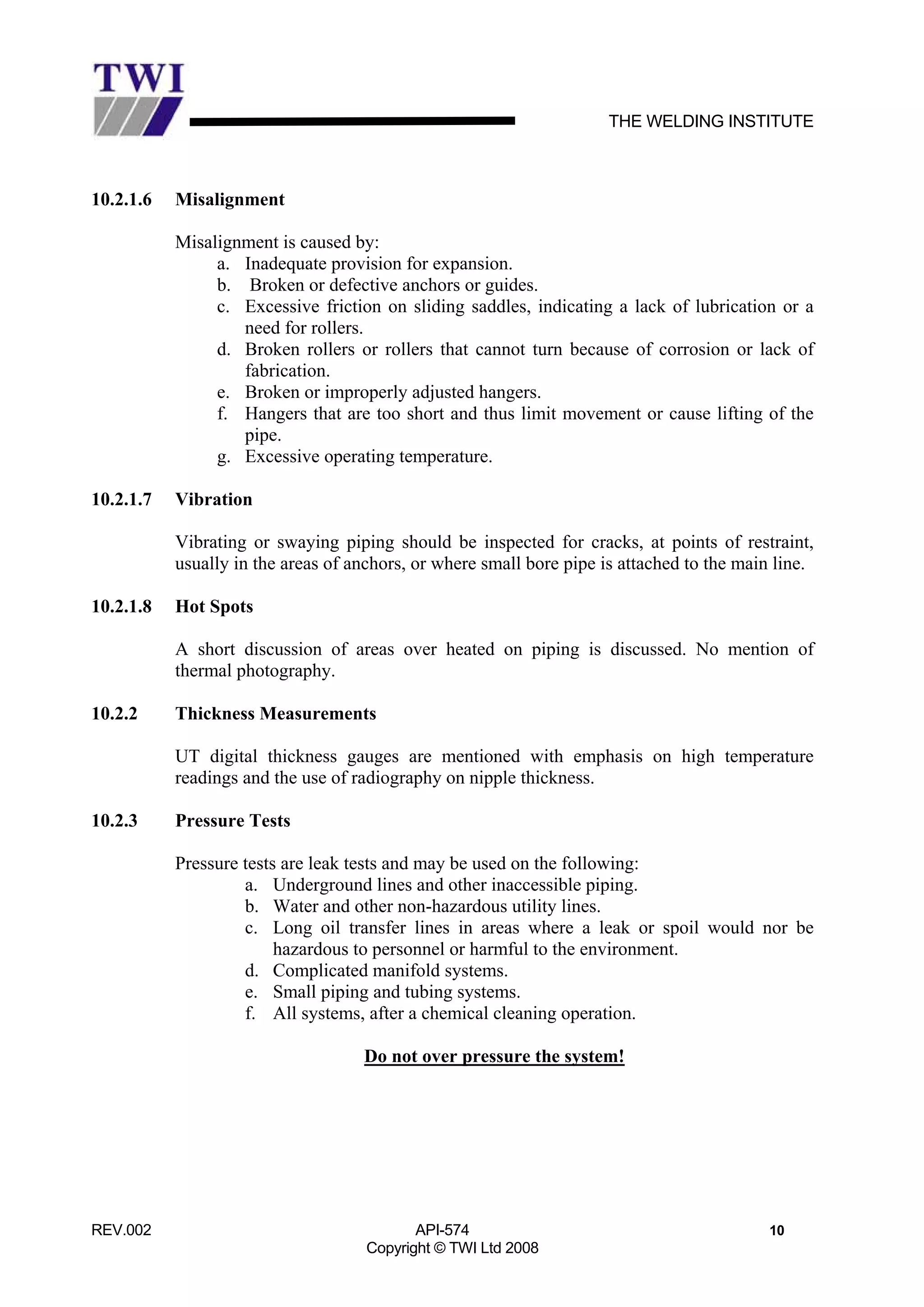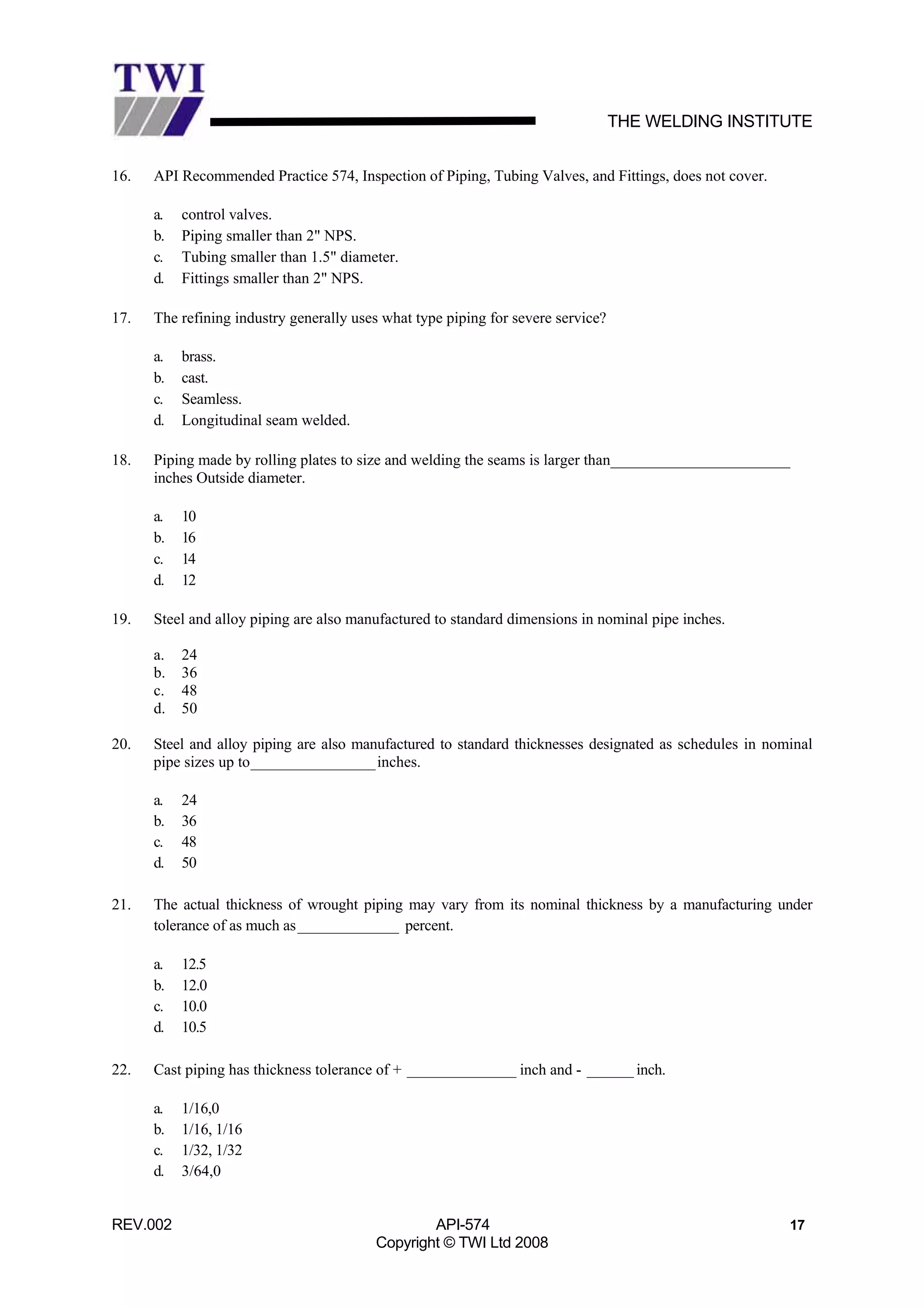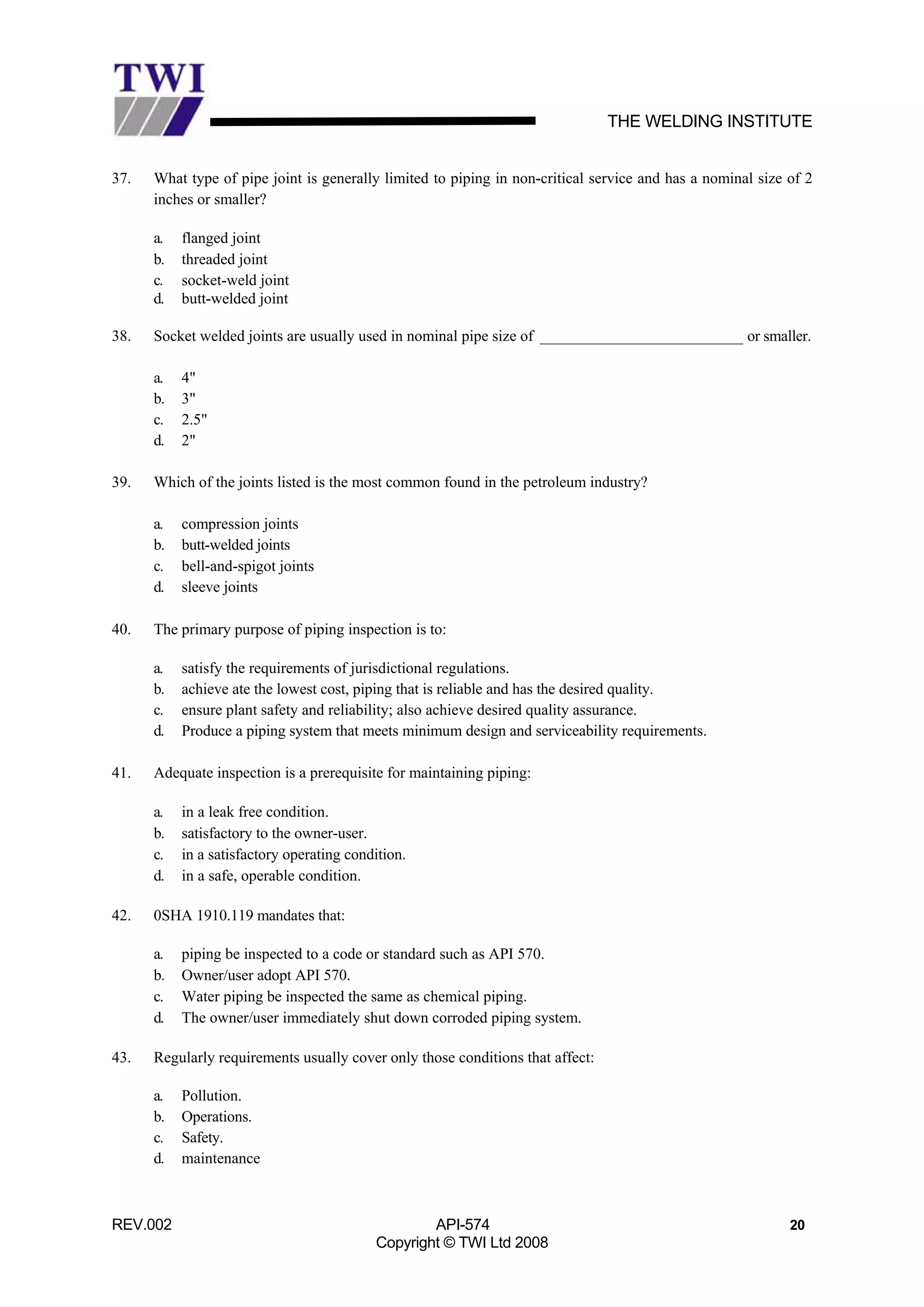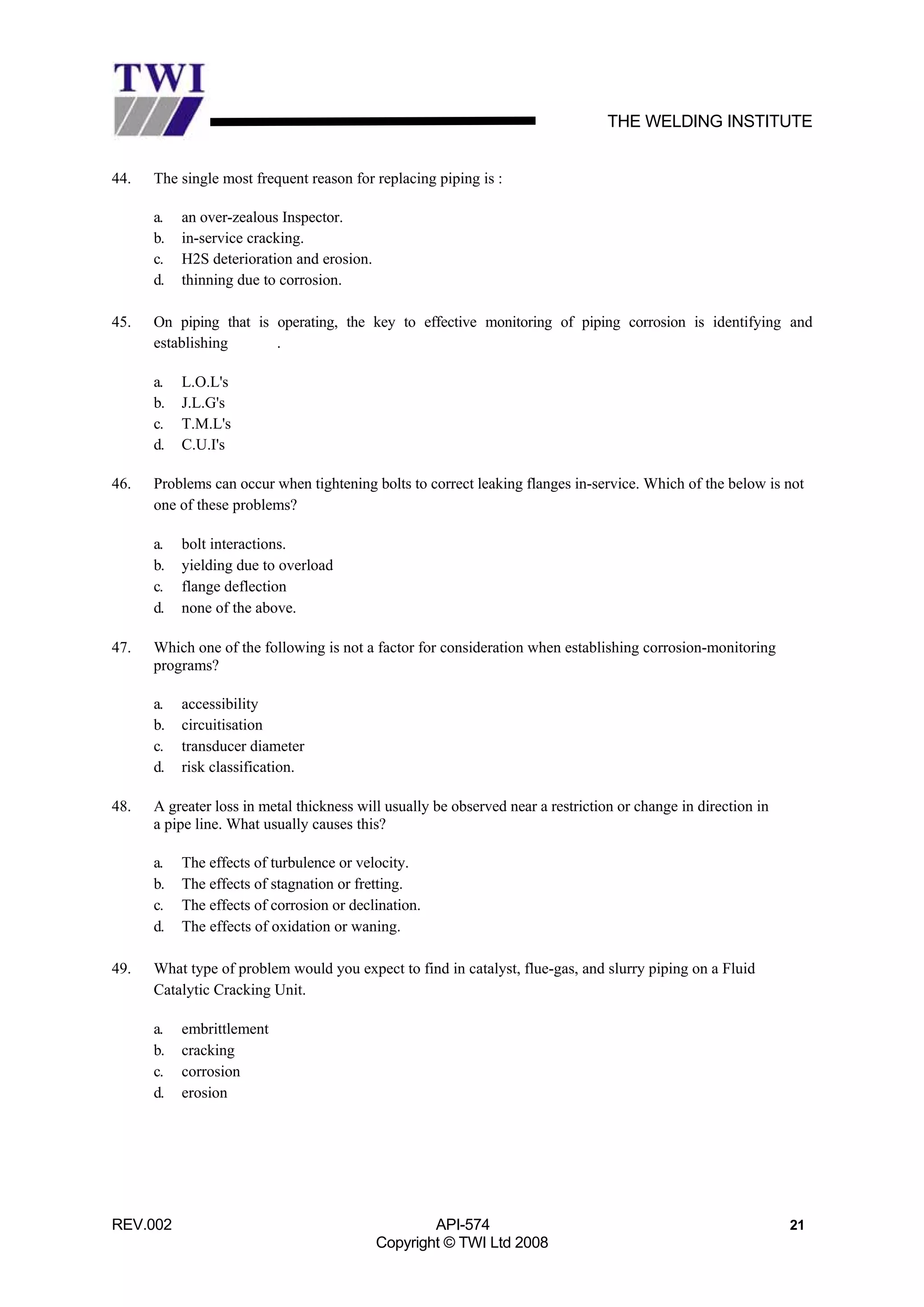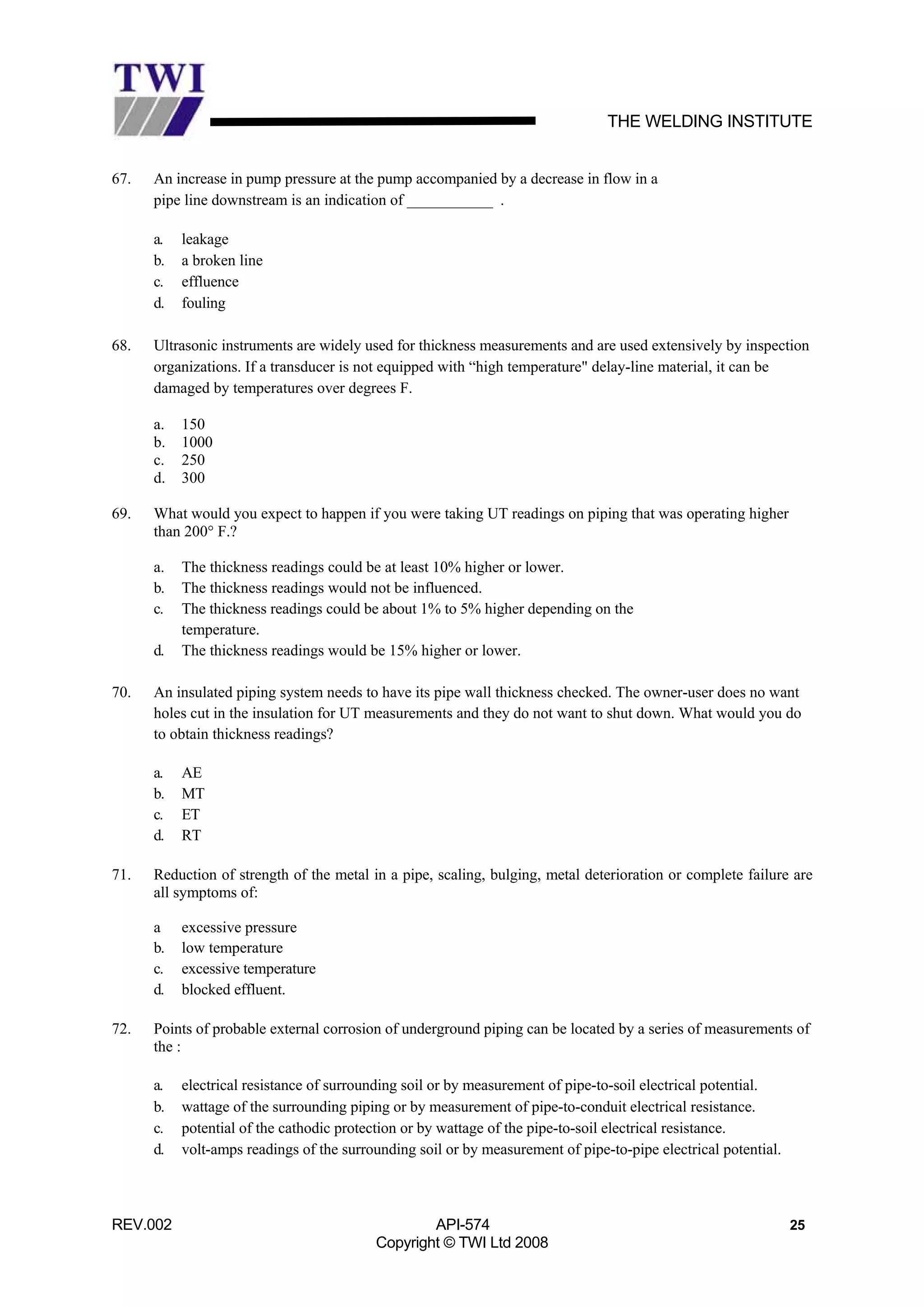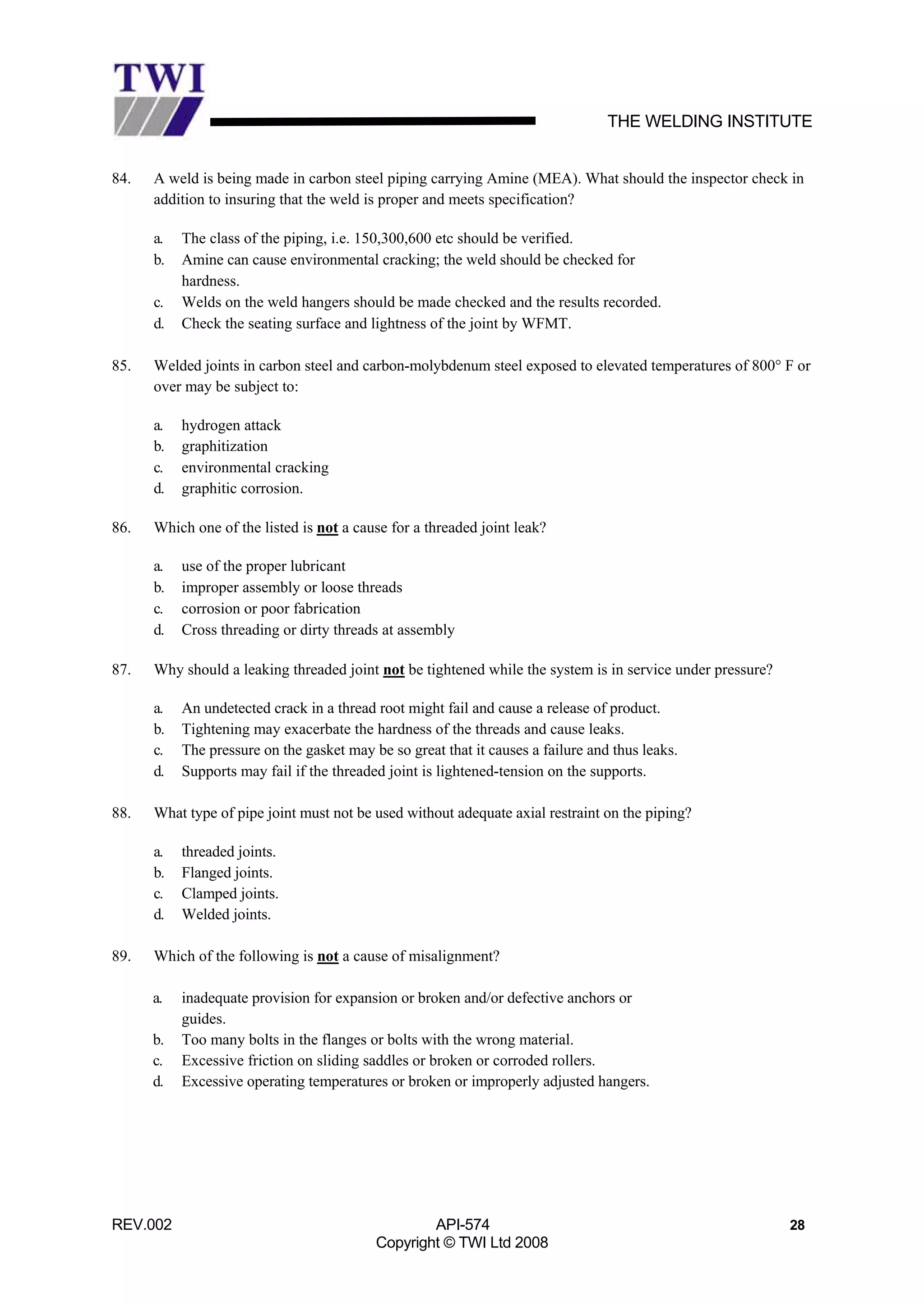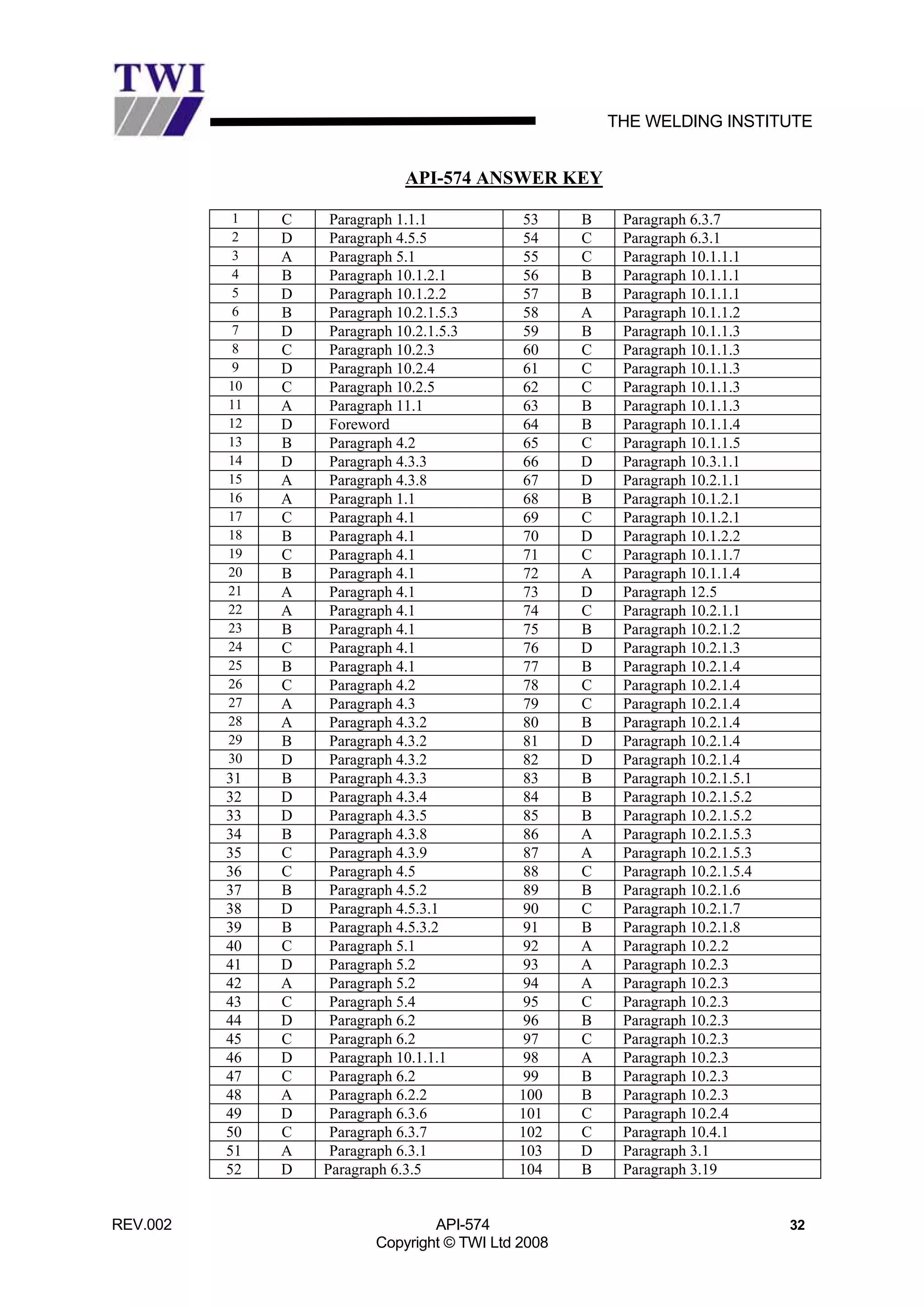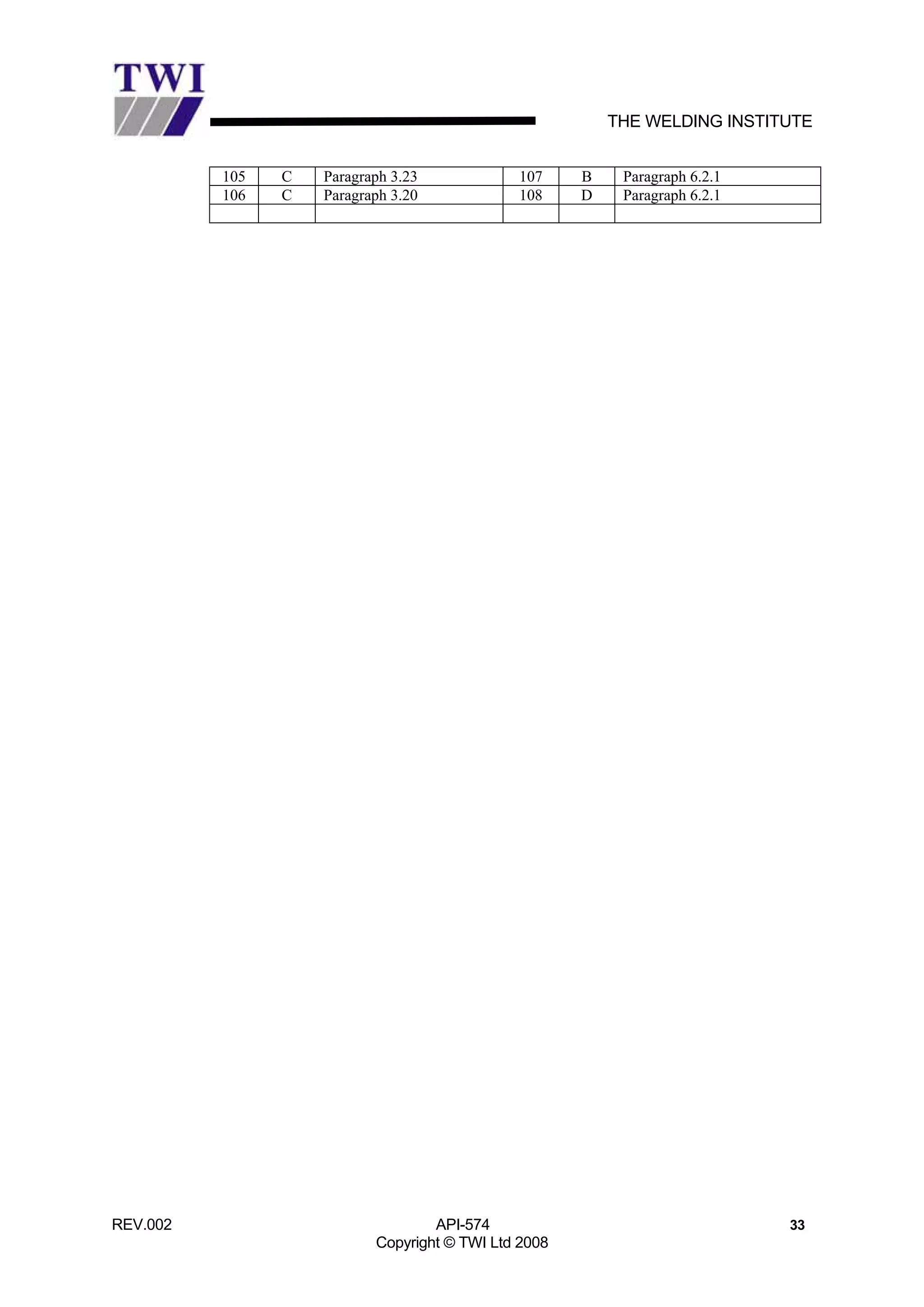This document provides an overview of API 574 which covers inspection practices for piping, tubing, valves and fittings used in petroleum refineries and chemical plants. It defines key terms related to piping inspection and describes the main components of piping systems including piping, tubing, valves and fittings. The document also outlines the main reasons for conducting piping inspections, which are to ensure plant safety and reliability, meet regulatory requirements, and allow for more effective preventative maintenance scheduling to reduce costs and improve operations.

